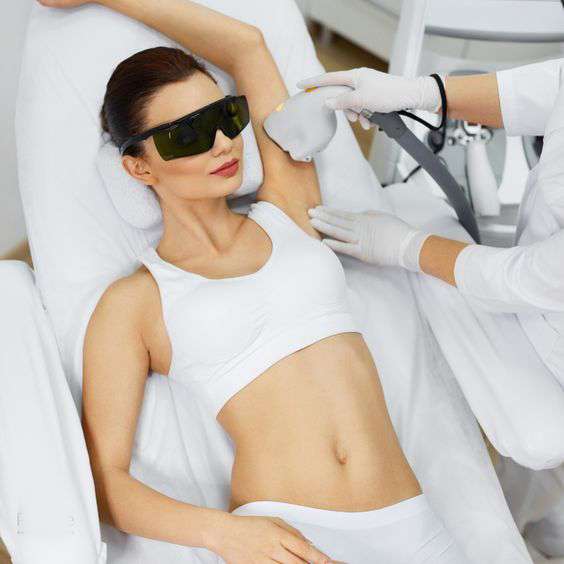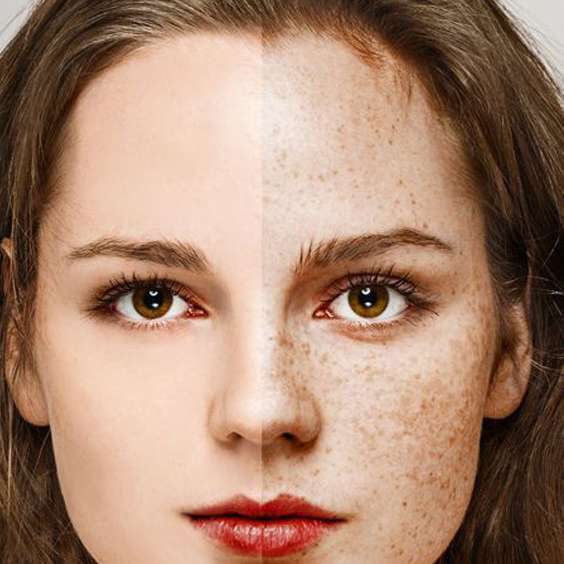Vitiligo Surgery
Vitiligo is a skin disease characterized by increased depigmentation of the epidermis in circumscribed areas such as eyes, neck area, armpits, elbows, genitals, hands, knees, and feet typically without causing superficial reddening of the skin and does not make the skin crack and come away in thin pieces. This not only affects the body but also affects the hair and scalp. Vitiligo may affect people of any age and gender. It may affect people of all skin types but the condition is more visible in people with a dark complexion. This condition is not life-threatening or contagious but it often leads to psychological stress to the person.
The exact cause is unknown, but the studies believe that the changes in the immune system are responsible for the condition. Usually, the normal color of hair and skin is determined by melanin. Melanin is a dark/brown pigment present in the hair and skin which is responsible for your complexion, the more melanin you have the darker you look and vice versa.
When Vitiligo occurs, the cells that are responsible for the production of melanin may die or stop working. Therefore, this leads to uneven patches upon the skin, and other causes may include:






- Dermatologist
- Eyelid Lift
- Botox and Xeomin
- Lip Lightening
- Facial Fillers
- Mole/DPN & Skin Tag Removal
- Fat Grafting & Volume Restoration
- Chin Correction
- Keloid Removal
- Face & Neck Lift
- Carbon Laser
- Tattoo removal
- Hair Removal
- Vitiligo Surgery
- Acne & Acne Scar removal
- Earlobe Repair
- Hair Fall Treatment
- Hair Wigs Services
- Hair Transplant
- Chemical Peeling
- Genetic oxidative stress
- Lifestyle changes
- Exposure to some chemicals
- Exposure of the body to extreme sunlight or cuts
- Environmental factors
- Hereditary
- Virus
Treatment depends on the type of vitiligo that occurred and according to the wish of the patient.
The therapeutic target in vitiligo is to treat or improve the appearance of the affected skin. Therefore, it may be treated in different ways or it may be left untreated if the patient is not ready for the treatment.
1. Supportive Therapies: Patients are advised to reduce or avoid trauma such as physical trauma, surgical incision, sunburn, and friction. Along with this psychological support should be considered for patients. Cosmetics are another temporary solutions that may help to cover the unevenness of the complexion upon the face. Self-tanning products containing Dihydroxyacetone may also be useful in camouflaging affected skin in patients with a lighter complexion.
2. First-Line Treatment: Topical therapies are recommended as an initial or first-line treatment in patients with limited/segmental vitiligo.
Topical corticosteroids work by reducing the immune response against melanocytes and can be used in children and adults. These topical agents work best for the sun-exposed areas of the skin, especially in dark-skinned people.
In some areas particularly face axillae, genitals, and breasts: this treatment, if continued for a long-time that may result in corticosteroid-induced atrophy and hypertrichosis. Therefore, patients are suggested to check regularly for adverse effects such as purpura, skin thinning, and striae distance.
Therapy can be given on a discontinuous basis to provide potential benefits and avoid side effects. And it is mandatory to use these corticosteroids twice daily for a week and discontinue for a week.
3. Second-line Treatment: Photo-therapy is considered as the second-line treatment for vitiligo, in this treatment exposing the skin to UVB lamps is the most common treatment. It can be done with a UVB lamb at home or in a hospital setting. The exposure time has to be controlled so that the skin does not suffer due to overexposure.
If the spots are on the neck and face which are existing not more than 3 years, then the treatment may take a couple of weeks or more. If the spots are on the hands and legs and have been existing for more than 3 years, it may take a few months
Prevention is Better than Cure
Prevention is better than cure. Therefore, follow the below preventive measures:
Protect your skin from sun exposure. Use a broad-spectrum sunscreen with an SPF not less than 30.
Apply sunscreen evenly every 2 hours or more often if you are swimming, sweating or exposed to sunlight.
Caution: With this treatment, some individuals may be affected with serious side effects which involve the risk of developing skin
